Destiny’s newest PvP variant Rift is NBA Jam meets Capture the Flag. Here’s what to expect from this end-to-end war of attrition.
Wheels are not being reinvented here, but fitted with diamond encrusted rims. The arrival of Rift in Destiny is not the same leap as when Threewave brought Capture the Flag to Quake, but in terms of revitalising playlists, all the screaming and maniacal laughter reverberating around your headset is a clue to how much of a hit this already is.
Rift is overblown and the scenario ridiculous, but already it’s clear that subclass capability and team oriented strategy are standing on solid foundations.
Before breaking down the gameplay basics, something we want to pass along is how PvP-Noob friendly the whole Rift set up is, without meaning disrespect to those of us that prefer not to have their skull popped endlessly for minutes that feel like hours. Rift is an objective mode that cannot turn sour owing to spoil-sports that lurk only to boost their Kill/Death ratio. Unless you’re Igniting the Rift (scoring), your team is flat-out going to lose and how. With six guys focused on securing the Spark (ball/flag equivalent) and then driving it to the opposing team’s Rift, the communal howling – happy or sad – makes it more of an inclusive sport, as opposed to the seriousness of Trials of Osiris.
Get Ready for Rift
The rules are simple, their execution innumerable: in the centre of the map a Spark is generated for which two teams compete to take control. Upon seizing the Spark, one Guardian becomes the Spark Runner, aiming to smash this sizzling artefact into the enemy’s Rift on the opposite side of the map. Their fellow Guardians organise to assist while their rivals respond swiftly to stop the Spark Runner. If the attacking side succeeds they Ignite the Rift, if the Runner is killed the Spark resets and re-roll. Points are earned across many kinds of contribution, encouraging involvement and communication.
A whopping 1500 points are handed to the Guardian that makes the ‘dunk’; 1650 if you’ve the stones to deliver it backwards. This comprises the 300 points for picking up the Spark in the first place, and a further 100 points for passing each of the checkpoints. So, a successful drive can mean around 2000 points for the team if the Runner can add to that with kills worth 150 along the way.
Plainly it is only a fool that enters a game of Rift hoping to win, 100 points at a time for regular kills, even with the usual embellishments for a solid tour of duty. Since the first team to 20,000 points wins, this a real contest for Spark possession and Spark Runner gains.
The Basic Rift Dance
So far we’ve only talked about getting ahead on points as the attacking team, but defending well – as with any team sport – can grind out a victory too, if you wish to play it that way. 400 points total (300+100) is scored for killing the Spark Runner, which immediately bests their 300 for carrying.
So, if your team has the map covered, and is confident in taking the shots, this can make for a very miserable evening for hapless fireteams marching into your Jaws of Death. This is decidedly risky though, since it’s likely their Runner will have made it through at least one checkpoint before being stopped. Also, a cunning team in possession has one minute and 15 seconds to twist and turn across the whole map, luring defenders out of their camping spots the more nervous they become.
Basically, you have to go after the big points. And, more importantly, you really want to because the spectacle is so worth it – you crave to be that guy over, and over again. And so, the tussle nearly always begins in the centre of the map, with the first consideration being who wants to stick their necks out first while the Spark takes its customary 15 seconds to generate.
Guardian flavour CTF
While new maps such as Memento (verticality plus enclosed spaces) and Vertigo (huge line of sight) contribute to the tactical approach, the fact that Guardian fireteams bring all manner of subclass capability and Super potential to the arena makes stand-offs so much more intense and complex.
You’ll often encounter a Titan led group, whose mainstay is a Ward of Dawn placed over the Spark generator, doubling up as an enhanced shield for the guy that eventually bursts out of it. The bonus for the defending team is that this is already one Super less to worry about when things open up.
Striker Titans and Voidwalker Warlocks have been noted as wingmen for Spark Runners, leaping ahead of the Spark to deliver their area-of-effect Supers and clear the way of defenders. What they probably don’t care enough about is how the explosion from Igniting the Rift causes a shockwave that scores a Collateral Damage multi-kill comprising several 100 point Spark Runner bonuses.
Meanwhile, you can fully expect to find Bladedancer Hunters tucked away in stairwells and tunnels, using Stalker to remain a faint flutter on the radar. Gunslinger Hunters flank Rift defenders with Golden Gun, meaning that better teams are constantly moving to avoid being easy targets.
Rift: The Thinking Man’s Madness
Currently, many fireteams walking all over their challengers are those adhering to age-old CTF rules, marauding as a unit, pushing forward in a kind of mini-Phalanx to protect the Runner. Maybe they’ve considered sniper over-watch if especially organised. But with the presence of AOE Supers and/or RPG devastation unique to Destiny’s Crucible, strategies are changing fast to find the perfect balance of a rock-paper-scissors approach. No subclass has so far proven superior in controlling the maps and guaranteeing a Spark Runner’s passage to the Rift. Likewise, defending is still in flux.
No matter what ideas you have cooking, just take our advice and always take the Spark.
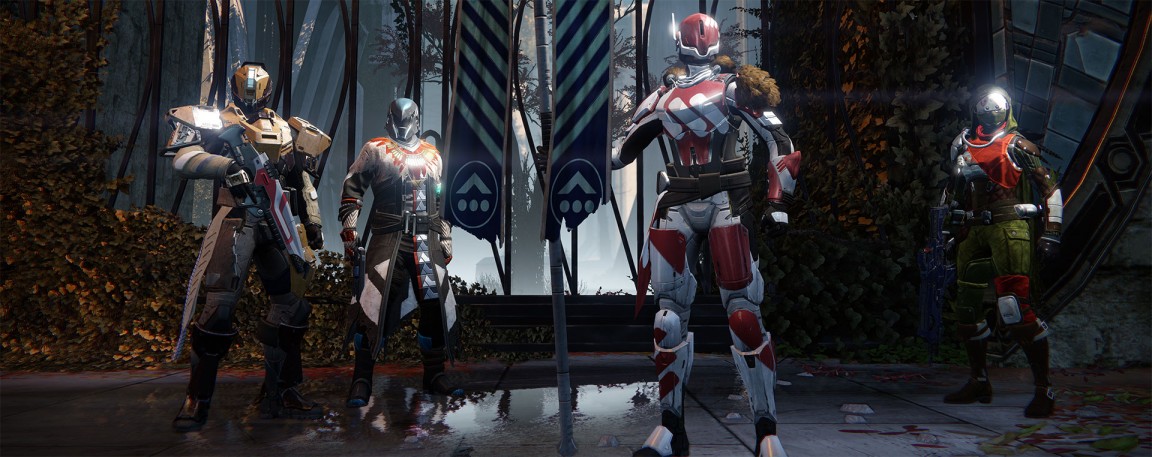
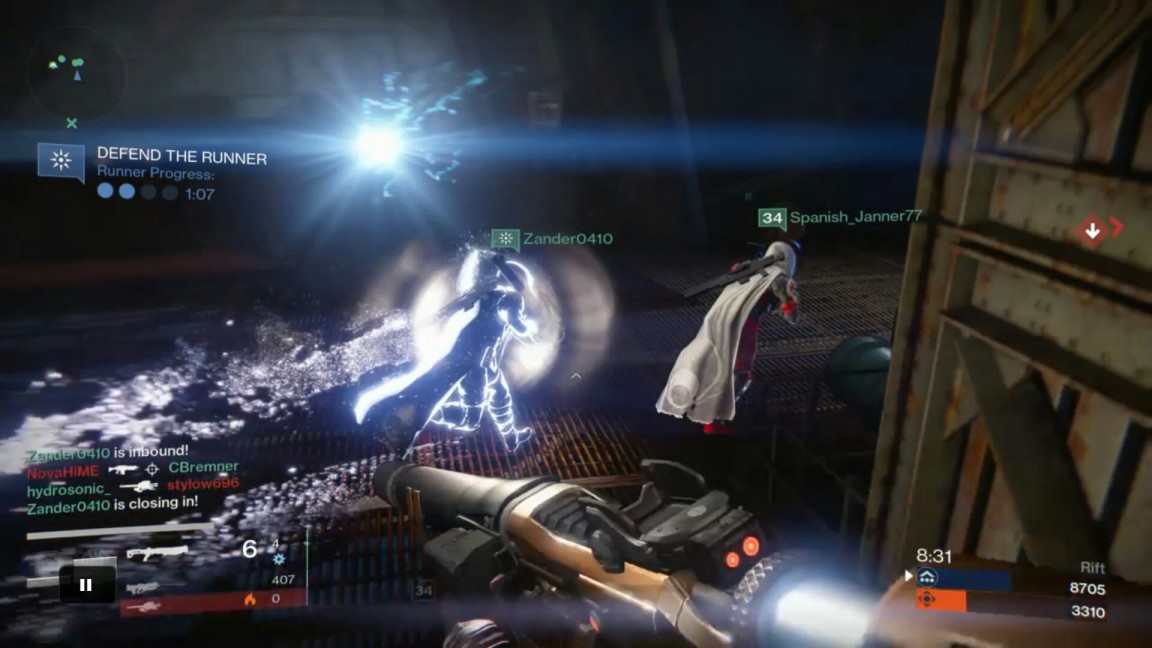
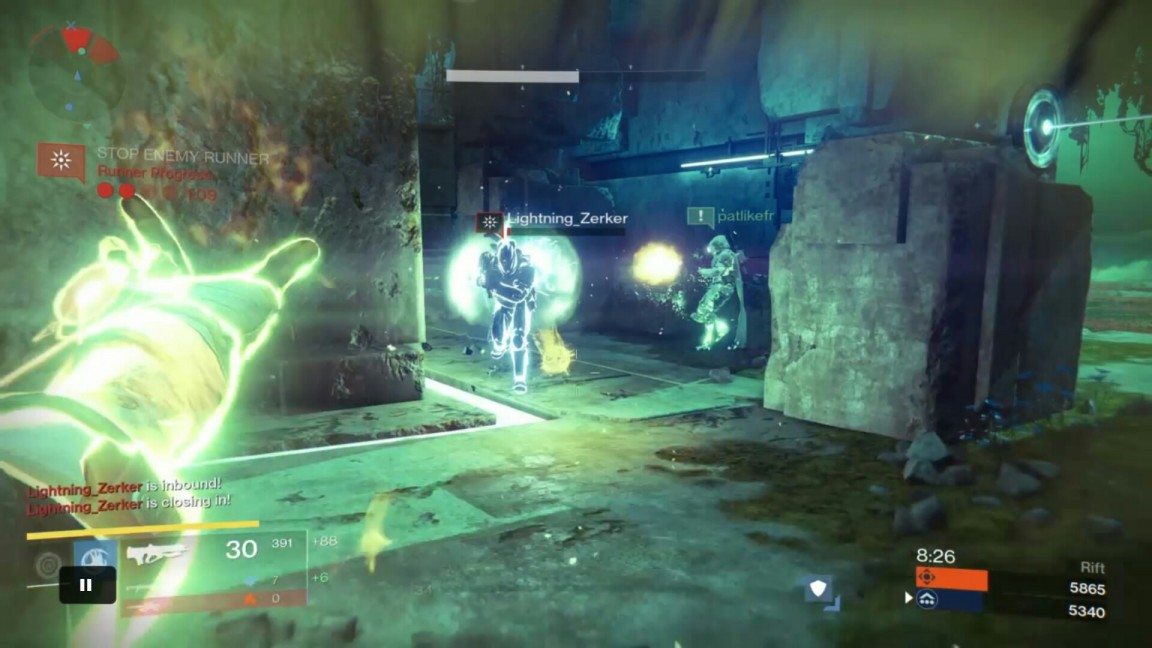
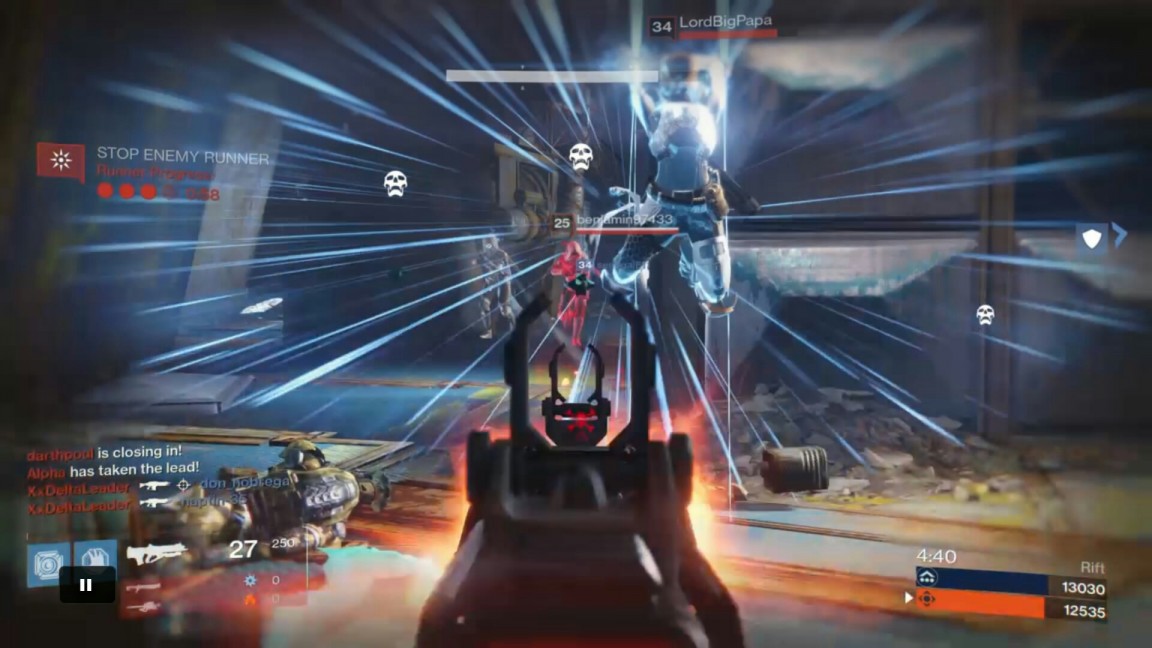
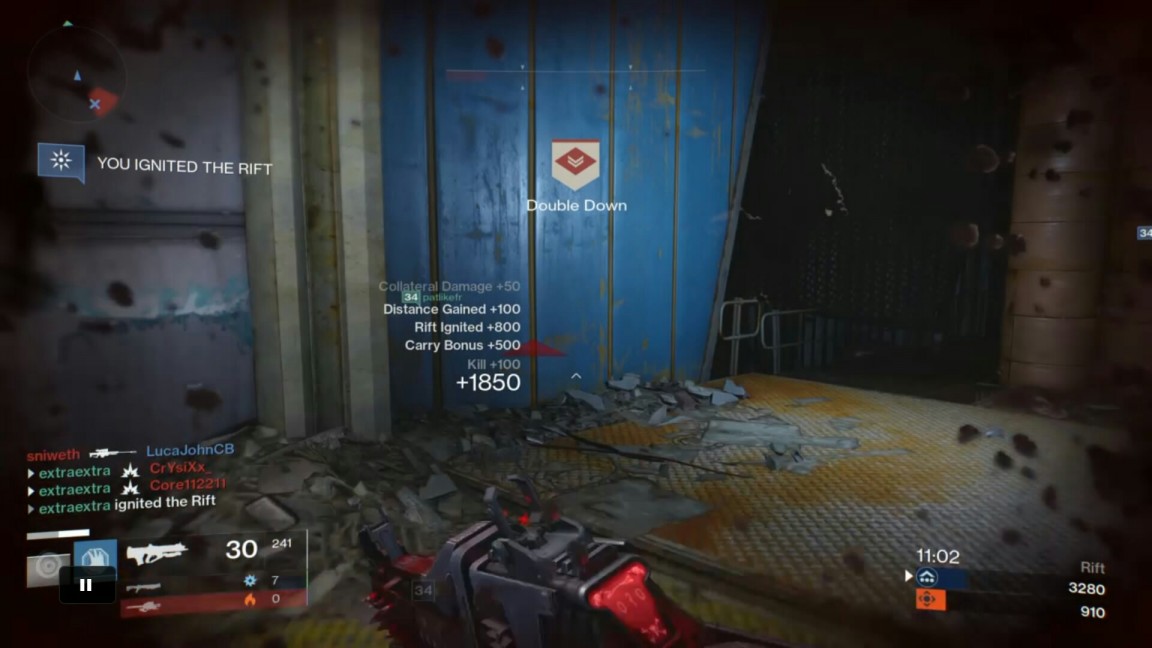
Comments
Post a Comment